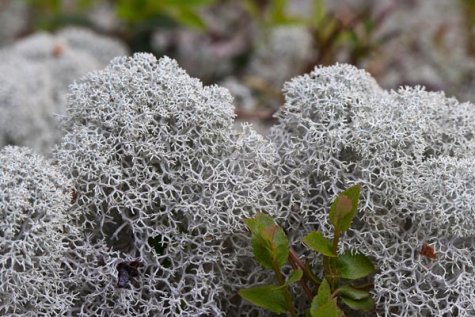Mosses and lichens
Photo: Arne Ader
Translation: Liis
Reindeer lichen: Cladina stellaris
(Reindeer lichen) Alpi põdrasamblik Cladina stellaris
(Reindeer lichen) Harilik põdrasamblik Cladina rangiferina
(Reindeer lichen) Mahe põdrasamblik Cladina mitis
It isn’t as simple as that mosses grow on the ground and lichens in trees. Of course some confusion is created in Estonian by the very similar words – samblad (mosses) and samblikud (lichens). Lichens grow on the ground, on trees and rocks; a quarter of a century ago they were still classified in the plant kingdom, quite closely related to mosses.
By now we know that lichens belong to fungi, and moreover that they are composite organisms, that are classified according to the dominant fungus. In Estonia there are more than three hundred macrolichens and more than twice as many microlichens. The slow-growing lichens have difficulties in competing with plants, but their strength is in colonizing locations not habitable for others: rocks, tree trunks etc.
The reindeer lichens are probably the best known lichens, and the most noticeable of them is the Cladina stellaris reindeer lichen with its domed, shrub-like shape; it can share the habitat with other reindeer lichen species. It is very visible, growing on sandy as well as peaty soils: in heath woodlands and dry boreal forests, on sand dunes and in bogs.
The Cladina stellaris reindeer lichen is whitish grey, with a slight yellow tinge. The Cladina rangifera and C. mitis lichens have a bright grey colour, growing in solitary tufts or as whole carpets; they don’t grow like miniature cupolas or hillock landscapes.
A few days ago there was an overview of peat mosses:









